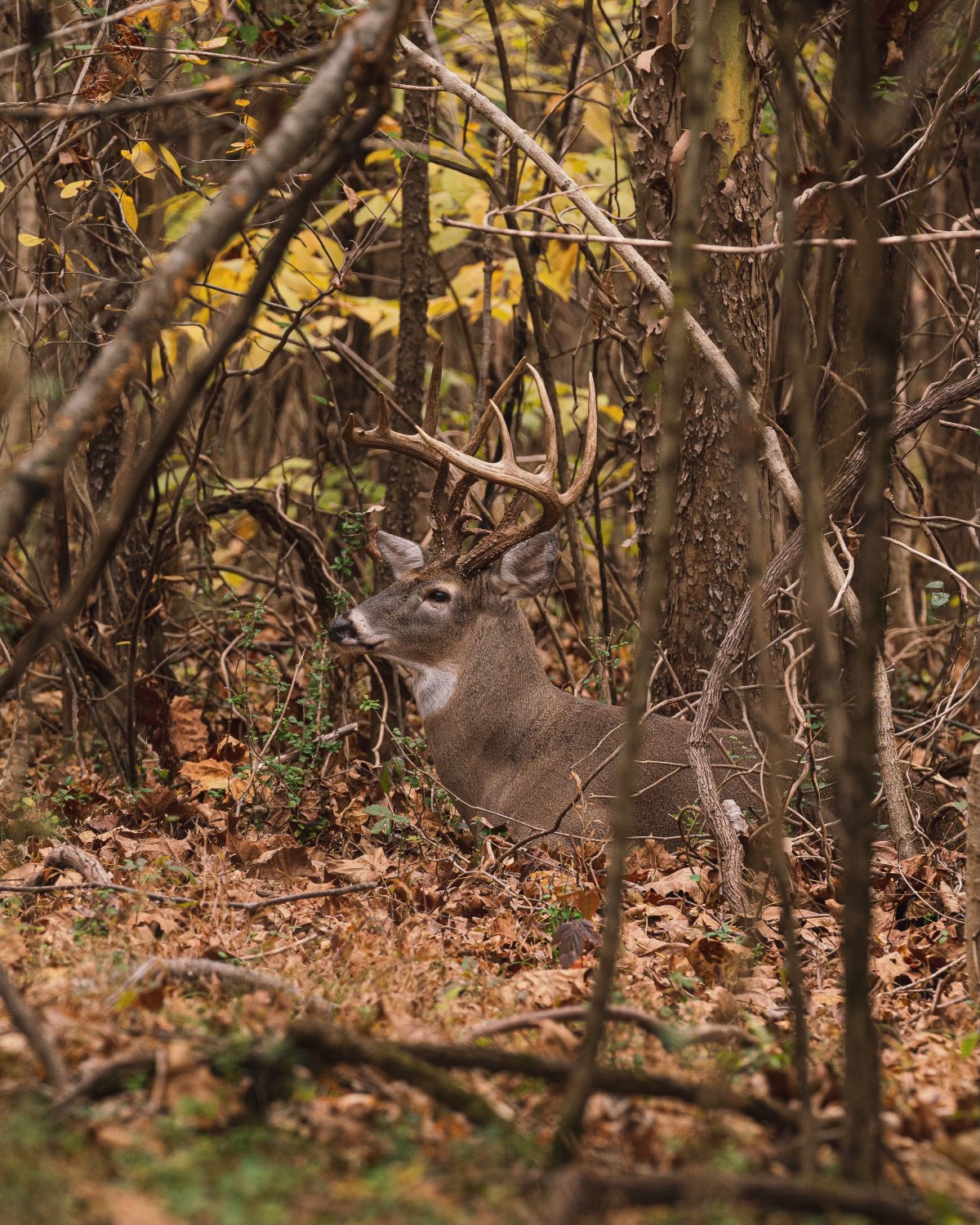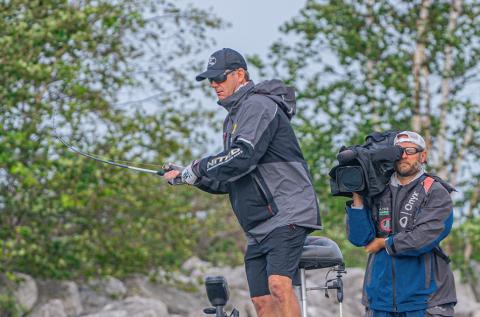Heath Wood
Bucks are easier to pattern during the early season, so in theory, harvesting a mature buck should be no problem. Yet deer do not want to move when the daytime temperature rises to ninety degrees during the summer and at the beginning of fall. Indeed, a summer or early-season travel path for a mature whitetail buck is much easier to pattern due to limited movement. As the fall nears, bucks remain patternable. Three main factors sum up a deer's life at this point in the season: food, water, and cover. Bucks do not move as much in daylight hours in the earlier portion of the hunting season, creating a problematic situation for hunters. Food sources are an excellent area to focus on when hanging a treestand. The problem that hunters often face is that bucks only show up a few minutes before dark, leaving minimal opportunities to get within archery range and make the harvest. The same goes for water sources; they are great locations to hunt, yet a buck will get a quick drink and then be gone. This leaves thick cover and bedding areas as the option for hunters to focus on when hunting early season. Hunters face several risks when getting close to where a buck feels the most secure through the most considerable portion of the day. Yet, if the hunters use caution and hunt wisely, early season can be one of the best times to harvest a mature buck.
The Dangers of Hunting Close to Early Season Bedding Areas

Incredible photography of a bedded down buck by friend and photographer RT Bailey.
The most challenging task for early-season hunters near bedding areas is due to bucks spending most of their daylight hours in or near the cover before heading to food or water during the evening and into the night.
Bedding areas, especially early in the season, are nearly impossible to sneak into during the middle of the day. When hunters are trying to get to their stand for an evening hunt, a buck, who is most likely bedded nearby, spends all their time watching and smelling for any danger that might result in them needing to leave the area. When a hunter has discovered where a mature buck is bedding, the chances of making a harvest increase if they do not push him out of the area. Hunting bedding areas have been noted as a risk factor, and many hunters choose to steer clear of the area completely. If hunting bedding areas is such a risk, yet it can increase the odds when hunting, it leaves hunters wondering if it is possible to sneak into a buck’s core sanctuary to hunt.
Finding Whitetail Bedding Areas
First, the hunter must ensure they know where a buck is bedding and if he is worth the risk. To help find a buck’s core bedding area, hunters can use cellular game camera technology that helps gather information without having to keep disturbing the area when checking cameras.
Recently, while conducting a few off-season chores on my hunting properties, a friend and I spent the afternoon filling deer feeders and hanging new camera locations to help fine-tune my scouting before the season arrives. With only one camera left to hang, I suggested putting it down at the bottom of the edge of a field bordered by a deep ravine full of brush and thick cover that I was sure a bachelor group of bucks had been using as their bedding area. When drinking my morning coffee, I checked my phone the following day to see if I had any pictures from my Stealth Cam Command Pro app. Sure enough, a group of mature bucks visited the small pile of food I had poured out the day before.
Cautiously hanging a cellular camera at the edge of a suspected bedding area is an ideal way to help pull a mature buck out of the cover during the night. Using the edge of the cover, I did not have to walk directly through an area where deer could be bedded. Not only does this prevent scaring them out of their bed, but it also averts leaving scent or any other sign that danger is near. I can then monitor game camera photos from my phone for several days before returning to add more food or move the camera to another location. Once it is established where a mature buck is bedding, the planning phase of the hunt can begin.
When and How to Hunt Bedding Areas
A confirmed bedding spot has been found; the next challenge becomes getting close enough to hunt.
To successfully hunt near a bedding area, it is vital to remember to hunt near but not directly in the middle of their bedroom. Several weeks before the season, hunters should have stands already in place, with wind direction and a proper approach to the stand being the two most significant factors. Ensuring that the wind will not carry human scent toward the bedding area is vital when walking to the stand. Doing so prevents deer from smelling the hunter before they have a chance to get in the stand. The wind should be blowing toward the face or a crosswind carrying smells away from the area that deer will most likely be approaching. The same precaution should be taken to ensure deer do not encounter the hunter while walking in. Often, hunters use old roads, creek beds, or structures that prevent any deer bedded from watching them into an area.
To prevent deer from smelling hunters as they are walking in or while hunting, wear scent-control clothing such as ScentLok’s BE:1 Phantom pullover, which features carbon alloy technology that absorbs unwanted odors and provides better scent control against one of mother nature's greatest noses. As an added precaution, hunters should also use a scent-eliminating spray, such as Scent-A-Way from Hunters Specialties, on all their outer garments, inside of their hats, bottoms of boots, and anywhere else that unwanted odors may be.
When dangerously close to a bucks sacred bedding area, using wind direction, scent control clothing, and scent sprays are vital in staying hidden.




























